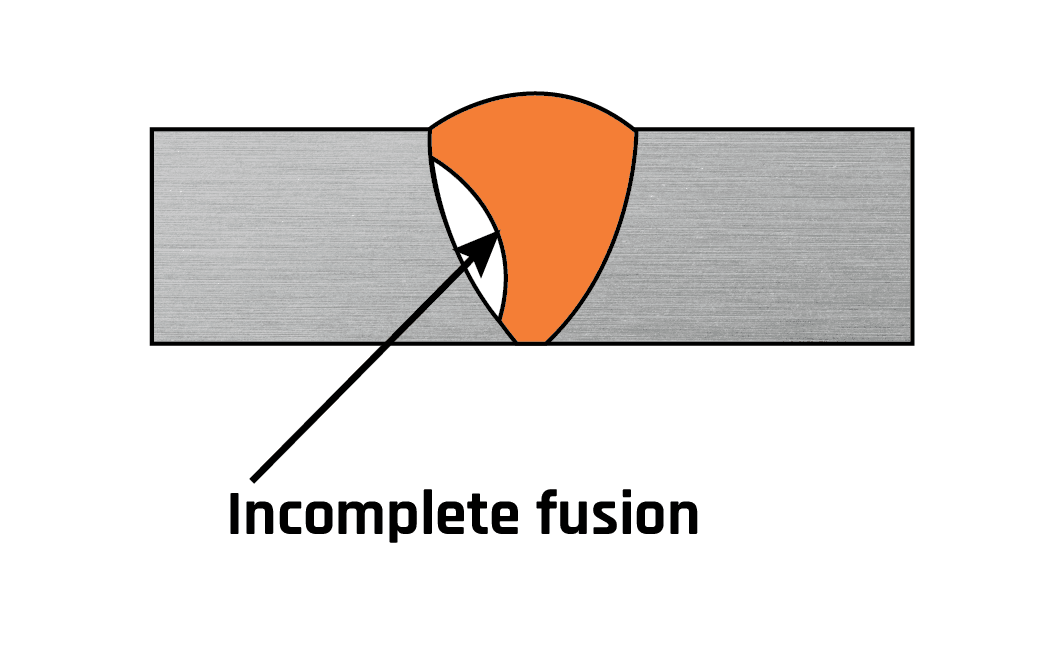Finest Practices for Preventing Weld Undercut: Grasping the Fundamentals
Essential Tips for Welders: Preventing Undercut Welding and Ensuring Stronger Weld Joints
In the realm of welding, attaining strong and long lasting weld joints is the cornerstone of producing high-quality work. One common difficulty that welders typically experience is undercut welding, which can jeopardize the honesty of the weld joint.

Understanding Undercut Welding
Undercut welding is a typical welding issue that happens when the weld steel fails to properly fill up the groove and results in a groove-like anxiety along the weld grain. This defect compromises the weld joint, making it vulnerable to breaking and failing under stress. Undercutting can be triggered by various variables, including extreme welding current, high welding speed, improper electrode angle, inaccurate electrode size, and inadequate welding strategy.
One of the main factors for undercut welding is an inequality between the welding present and the welding speed. If the welding current is too expensive or the welding speed is too quick, the weld metal might not appropriately load the groove, resulting in undercutting. Additionally, using an electrode that is as well huge can cause a comparable outcome, as the excess steel can not properly move into the groove.
To avoid undercut welding, welders should guarantee they are utilizing the proper welding specifications, maintain a suitable electrode angle, select the ideal electrode size, and method appropriate welding methods. By dealing with these elements, welders can minimize the threat of damaging and create stronger, much more dependable weld joints.
Correct Welding Method
Effective welding technique plays an important duty in guaranteeing the high quality and stability of weld joints. Appropriate welding technique entails a mix of skill, precision, and adherence to best techniques. One basic aspect of correct welding strategy is preserving the appropriate angle and range in between the welding gun and the workpiece. Welders should also pay close focus to the traveling rate and heat input to stop concerns like undercutting, porosity, or insufficient blend.
Additionally, a constant and consistent hand motion is crucial for developing solid and sturdy weld joints. Welders need to aim for smooth, uniform activities to make certain even distribution of the weld material. Correct manipulation of the welding weapon and filler material is additionally crucial to achieving optimal penetration and fusion.
Furthermore, regulating the warm input and choosing the appropriate welding specifications based on the product being welded are crucial variables in achieving high-grade welds - Preventing weld undercut. Welders should comply with the suggested settings offered by welding procedure specs and adjust them as needed based on the specific requirements of the task. By understanding correct welding methods, welders can dramatically boost the toughness and integrity of their weld joints
Selecting the Right Electrode
When considering the relevance of picking the right electrode in welding applications,Preserving the right angle and distance between the welding gun and the workpiece is basic. The choice of electrode plays a crucial function in identifying the quality and stamina of the weld joint. Electrodes can be found in different types, each developed for particular purposes and materials.
To start with, choosing the suitable electrode diameter is important. Thinner electrodes are appropriate for welding thin materials, while thicker electrodes are better for thicker products and higher warm applications. Matching the electrode diameter to the density of the work surface aids attain a balanced weld.
Secondly, understanding the material structure of the electrode is essential. Various electrodes are designed for welding details materials like steel, stainless steel, light weight aluminum, or cast iron. Utilizing the proper electrode material makes sure excellent blend and decreases the danger of defects in the weld.
Finally, considering the welding position and technique is crucial when choosing the electrode kind. For example, particular electrodes are much better fit for vertical or overhanging welding settings, while others work well for flat or straight settings. Selecting the appropriate electrode based on the welding technique boosts the overall weld top quality and stability.
Preparing the Base Metal
To make certain a successful welding procedure, what initial actions should be taken when preparing the base steel for welding? Additionally, any type of existing weld product or residue from previous welding should be removed to make sure a clean surface for the new weld.

Conducting Post-Weld Evaluations

After performing these evaluations, welders need to contrast the results against sector criteria and task demands to make sure that the weld joint meets all necessary criteria. Any kind of inadequacies or discrepancies discovered throughout the post-weld assessment ought to be immediately attended to through appropriate rehabilitative procedures to guarantee the weld's honesty. By faithfully doing post-weld evaluations and promptly resolving any type of issues, welders can promote the high quality and reliability of their job, ultimately adding to the security and long life of the welded frameworks.
Final Thought

Finally, stopping undercut welding and ensuring more powerful weld joints require a mix of proper welding method, picking the ideal electrode, preparing the base steel properly, and performing post-weld evaluations. By recognizing the causes of undercut welding and applying the required preventative measures, welders can produce top notch weld joints that meet market standards and guarantee the architectural integrity of the welded parts.
Undercut welding is a common welding problem that happens when the weld metal falls short to correctly fill up the groove and results in a groove-like clinical depression along the weld bead (Preventing weld undercut). Undercutting can be created by numerous elements, including extreme welding current, high welding speed, inappropriate electrode angle, incorrect electrode size, and bad welding method
One of the major factors for undercut welding is an imbalance between the welding find out here existing and the welding speed. If the welding current is too high or the welding speed is as well quick, the weld steel might not adequately fill the groove, leading to undercutting.Preserving the right angle and range in between the welding weapon and the work surface is basic when considering the importance of choosing the best electrode in welding applications.